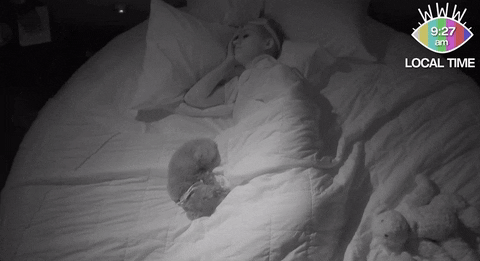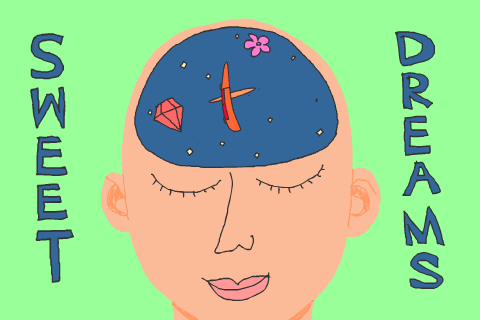
4 Tips For Creating A Bedtime Routine That Works
Prepares your body and mind.
A shocking 70% of adults claim that they don’t get sufficient sleep at least once a month and another 11% claim they never get a quality night’s sleep. With millions of adults suffering from sleep deprivation, there’s gotta be a better way.
The market is flooded with different medications and remedies promising to cure your insomnia once and for all. But, are these medications safe, and do they work? If you’re unsure of taking medication for insomnia or want to try a more natural approach, this article is for you. Here, you’ll learn 4 creative ways for creating a nighttime routine that prepares both your body and mind for sleep without the need for outside chemicals or supplements.
1. Set a Sleep Schedule (and stick to it!)
Bedtimes aren’t just for kids and setting an early alarm isn’t just for working adults. Creating a sleep schedule that includes a specific time for you to go to bed and a specific time to wake up is a good practice for anyone looking to improve their sleep quality.
Your body’s sleep-wake cycle, also called a circadian rhythm, acts like an internal clock, signaling your brain and body when it’s time for sleep and when it’s time to be awake and alert. Dating back centuries, before there were smartphones or even clocks, your body’s internal cycle was regulated by the rising and setting of the sun. During daylight, your body would naturally become more alert and as the sun set and darkness fell, you would begin to feel increasingly tired.
The best way to realign your circadian rhythm to its natural state is to set a consistent sleep schedule and stick to it. That means not just Monday through Friday, but also on the weekends and while on vacation. Choose a one-hour window to prepare for bed and set your alarm in the morning. Before long, you’ll start to naturally feel more tired around the same time each night and you may even wake without the need for an alarm some mornings.
2. Create a Healthy Sleeping Environment
Once you do retire to your bedroom for the night, it should be a quiet, dark, and comfortable place designed for sleep. There are a few ways to create a positive sleep environment. For starters, remove any unnecessary distractions. This includes light and noise disturbances. Invest in room darkening shutters or a sleep mask to keep unwanted light from creeping in. You can block out noise using a sound machine, oscillating fan, or noise-canceling headphones.
The quality of your mattress, pillows, and bedding is also important when it comes to achieving quality sleep. Invest in a high-quality mattress that provides adequate support. But, don’t worry, you can get a reasonable mattress for as low as $150 and use the money you saved to purchase new, lightweight bedding. Breathable sheets and blankets allow for good airflow and prevent night sweats. If you’re still struggling to fall asleep even after creating the ideal sleep environment, you can try a few other techniques.
Avoid staying awake in bed for longer than 15 minutes. If you don’t fall asleep within those first few minutes, get up and perform a relaxing activity until you feel tired enough for bed. You should also avoid performing any activities in your bedroom other than sleeping and sex. When you work, play video games, or watch TV in bed, you’re telling your brain that it’s okay to be awake and alert while in bed. Instead, reserve this space for sleep. This is a popular method of stimulus control used in Cognitive Behavioral Therapy for Insomnia (CBTi).

3. Adopt Relaxing Behaviors that Work
Everything you do leading up to bedtime can directly impact how well you sleep. In addition to setting a schedule and creating a calming sleep environment, you should incorporate relaxing habits into your nighttime routine. This includes everything from meditating or writing in a journal to listening to music, taking a warm bath, or drinking chamomile tea. While the behaviors themselves are important, it’s the routine of performing the same activities in the same order and at the same time each night that creates an organized recipe for success.
In time, your body views these behaviors as cues for sleep. If you also take certain medications at night to help you sleep, like Gabapentin, include this into your routine. Take your medication at the same time each night before performing your nighttime ritual like journaling, meditating, or reading.
4. Ditch the Digital Devices
One relaxing behavior you shouldn’t be doing directly before bed is scrolling through social media. One study showed that over 70% of people admitted to using social media after getting into bed. While this may seem like a harmless way to unwind and entertain yourself, the blue light from digital devices like your smartphone could be sabotaging your sleep.
As night falls and your body prepares for bed, your brain releases the sleep hormone melatonin. Similar to how light and dark regulate your circadian rhythm, they also trigger this hormone release. When you’re using blue light devices like a phone, computer, or tablet, your brain thinks it’s still daylight. Not only does this prevent the beneficial release of melatonin but it leaves you feeling alert, awake, and energized. It’s recommended you put your phone down at least 60 minutes before bed. The same goes for your laptop, tablet, or television. Instead of using a screen for entertainment before sleep, try reading a book (not on your tablet), journaling, or listening to music. This gives your brain adequate time to switch into “sleep” mode, unwind, and make it easier for you to fall and stay asleep.

Give Yourself a Fighting Chance
You may not realize it, but some of your routine behaviors and habits could be sabotaging your sleep. Using your cell phone before bed, lying in bed for hours staring at the ceiling, and going to bed at all hours of the night are all unhealthy behaviors that negatively impact your sleep quality.
By adopting a few of these tips and techniques, you can finally get the deep sleep you need and wake to feel refreshed and invigorated.
Looking for more tips on self-care, love, and beauty? Check out the other blog pages before you go.












